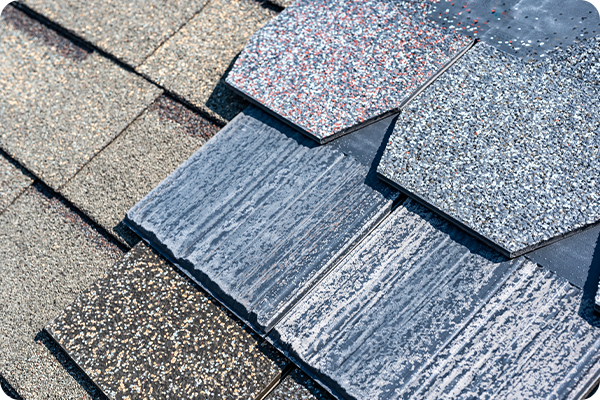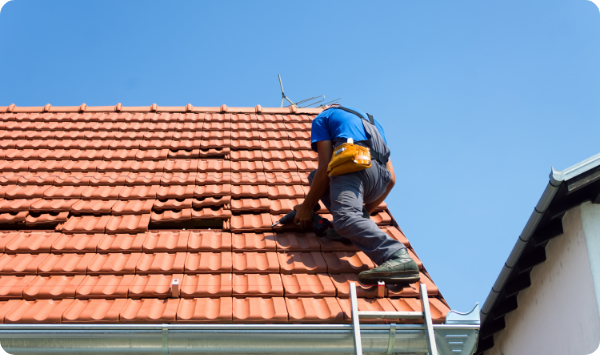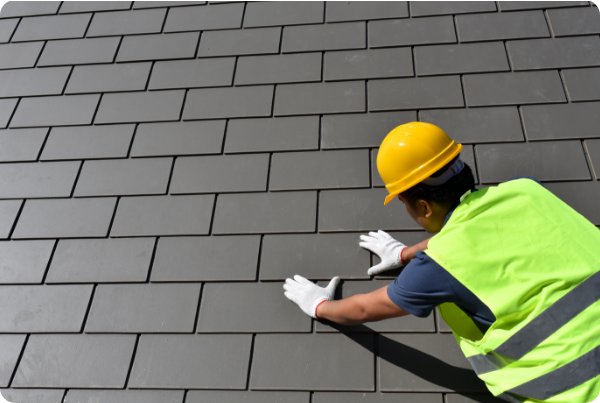Roof Sealing
Finding the right roof coating companies can be a game-changer for your property. This page will discuss what it takes to be a leading roof sealing contractor, highlighting their services and what sets them apart.
We'll also explore the benefits of fluid-applied coatings, showing you how they protect your investment while saving money in the long run. Plus, we share tips on selecting a reputable contractor to ensure top-notch service and lasting results.
Discover solutions that not only extend your roof's lifespan but also reduce cooling costs.
Find A Roofer
Fill out the form below and someone will get back to you as soon as possible
Benefits of Fluid Applied Roof Coating
Fluid-applied roof coatings act as an additional layer of protection against the elements, effectively sealing cracks and preventing leaks. This innovative solution reflects sunlight, significantly reducing heat absorption and cooling costs.

Energy Efficiency
One of the important benefits of fluid-applied roof coatings is their ability to reflect sunlight, significantly reducing roof temperatures. This reflection is not just beneficial for the roof's longevity but also translates into energy savings for building owners. By decreasing the need for air conditioning, these coatings can lead to substantial cost savings over time.
Extended Roof Life
Applying a fluid roof coating can dramatically extend the life of your existing roof. These coatings add an extra layer of protection against UV rays, rain, wind, and temperature changes. By protecting the roof from the elements, it's possible to prevent minor leaks and additional damage, extending the roof's lifespan.


Sustainability
Fluid-applied roof coatings are an environmentally friendly option. By extending the life of the existing roof, they reduce the need for new roofing materials as well as decreasing waste sent to landfills. Additionally, the energy savings they offer contribute to lower carbon footprints for buildings.
Cost-Effective Maintenance
Compared to the cost of a full roof replacement, fluid-applied coatings are a more economical option. Their easy application process means less labor and downtime for the building, translating into direct savings for property owners. Maintenance also becomes easier, as these coatings can be reapplied when necessary to continue extending the roof's lifespan.

Application Process and Considerations

The application of fluid-applied roof coatings is a meticulous process that requires preparation, application, and post-application steps to ensure optimal performance and durability. Initially, the roof surface must be thoroughly cleaned of any debris, dust, or existing coatings that may inhibit adhesion. This may involve power washing or using specialized cleaning solutions.
Following preparation, the actual application of the coating begins. This step varies depending on the product but typically involves using sprayers, rollers, or brushes to apply the coating evenly across the roof surface. The coating must be applied under suitable weather conditions; too hot or too cold temperatures can affect the curing process and the outcome.
Post-application, it is important to allow the coating to cure properly, a process that can take several hours to days, depending on the product and environmental conditions. During this period, the roof should not be exposed to water or heavy foot traffic to ensure the coating bonds well with the roof substrate.
Step-by-Step Application Process
-
Inspection and Assessment
Conduct a thorough inspection of the roof to identify any damage, leaks, or areas that need repair before the coating application.
-
Cleaning
Clean the roof surface with power washing or suitable cleaning solutions to remove dirt, debris, and any existing coatings or residues that may prevent adhesion.
-
Repairs
Address and repair any identified damages such as cracks, leaks, or weakened areas to ensure the roof is in good condition for the coating.
-
Priming (If Necessary)
Depending on the roof material and the type of coating to be applied, a primer might be needed to enhance the adherence of the coating.
-
Application
Apply the fluid-applied roof coating evenly across the surface using sprayers, rollers, or brushes, following the manufacturer's instructions for the best application method.
-
Curing
Allow the coating to cure undisturbed. The curing time may vary based on the product and environmental conditions, such as humidity and temperature. Avoid water exposure and minimize foot traffic during this period.
-
Inspection
Once the coating has fully cured, perform a final inspection to ensure even coverage and the absence of defects or misses in the coating application.
Considerations for the Application Process
When considering a fluid-applied roof coating, property owners should weigh several factors:
Roof
Condition
The existing roof must be in a condition that can support the coating, without extensive damage or wear and tear.
Material
Compatibility
Make sure the coating product is compatible with the roof material to avoid adhesion or longevity issues.
Professional
Installation
Selecting a reputable contractor is important for a successful application. Proper installation not only guarantees the effectiveness of the coating but also ensures that the warranty remains valid.
Weather
Conditions:
Planning the application during a period of favorable weather is important for the coating's proper curing and performance.

Cost Comparison of Traditional vs. Fluid-Applied Roof Coatings
When considering the cost of traditional roof repairs or replacements versus applying a fluid-applied roof coating, several factors come into play. Traditional roof repairs can be expensive, especially for significant damage or wear, and often only extend the life of the roof for a limited time. Roof replacements come at an even higher upfront cost, with the added inconvenience of longer installation times and the potential for disrupting activities within the building.
On the other hand, fluid-applied roof coatings present a more cost-effective alternative. While the initial cost may seem significant, it's typically lower than a full replacement and, in many cases, less expensive than repair costs over time.
The true value of fluid-applied coatings, however, lies in their long-term benefits. These coatings not only extend the life of the existing roof but also enhance energy efficiency. The savings on cooling costs can be substantial, affecting the overall operational expenses of a building.
The simplicity of application and minimal requirement for building downtime during installation, make fluid-applied coatings a less disruptive option. Because of these factors, when viewed over the lifespan of a roof, the cost-benefit ratio of fluid-applied roof coatings is generally more favorable compared to traditional roofing solutions. It's a strategic investment that pays dividends in both roof longevity and energy savings.
Checking Qualifications
Before hiring a roof coating contractor verify their qualifications, including licensing, insurance, and industry certifications, to make sure they have the expertise to deliver high-quality work.
Ensuring Professional Standards
When selecting a roof coating contractor, verify their qualifications to ensure you're choosing a professional with the necessary skills and experience. Look for certifications or memberships in industry associations as these signify adherence to certain standards.
Verifying Experience and Reputation
Experience is key when it comes to roof coating. Ask potential contractors about their years in business and request case studies or references from previous projects. Checking online reviews and ratings can also provide insight into their reputation and the quality of their work.
Insurance and Warranty
Confirm that the contractor has adequate insurance coverage, including liability and workers' compensation insurance. This protects you in case of accidents or damage during the project. Additionally, inquire about warranty options for their work to ensure any future issues can be resolved without significant extra costs.
Obtaining Detailed Quotes
Before making a final decision, obtain detailed quotes from several contractors. These should include the scope of work, the type of coating product to be used, and the total cost. Comparing quotes helps you understand the market rate and ensures that you're getting the best value for your investment.
Environmental Benefits of Fluid-Applied Roof Coatings
These coatings help decrease the temperature in areas where cities are much warmer than their rural surroundings, by reflecting more sunlight. This not only reduces heat absorbed by buildings but also lowers the overall temperature of the nearby environment.
By prolonging the life of the existing roof, these coatings minimize the amount of roofing waste that ends up in landfills. Given that roofing materials can take decades to decompose, the ability to reduce such waste is a considerable benefit.
Additionally, the energy savings from reduced cooling requirements translate into lower carbon emissions, aligning with broader environmental sustainability goals.

FAQs
-
How much is labor to coat a roof?
Labor costs vary, but expect to shell out around $0.50 to $2 per square foot for professional application.
-
Is it worth getting a roof coating?
Absolutely. It extends your roof's life, slashes cooling costs, and wards off leaks. Think of it as a smart investment.
-
What is the longest-lasting roof coating?
Silicone coatings stand out in this regard. They're highly resilient to weather and standing water, often lasting for more than 15 years with proper maintenance.
-
How much does it cost to spray a roof coating?
Total price tags hover between $1,500 and $7,000 on average. Factors like size, material type, and condition play big roles.
Get started today!
It only takes a few moments to find your roofer.
Find A Roofer
Fill out the form below and someone will get back to you as soon as possible